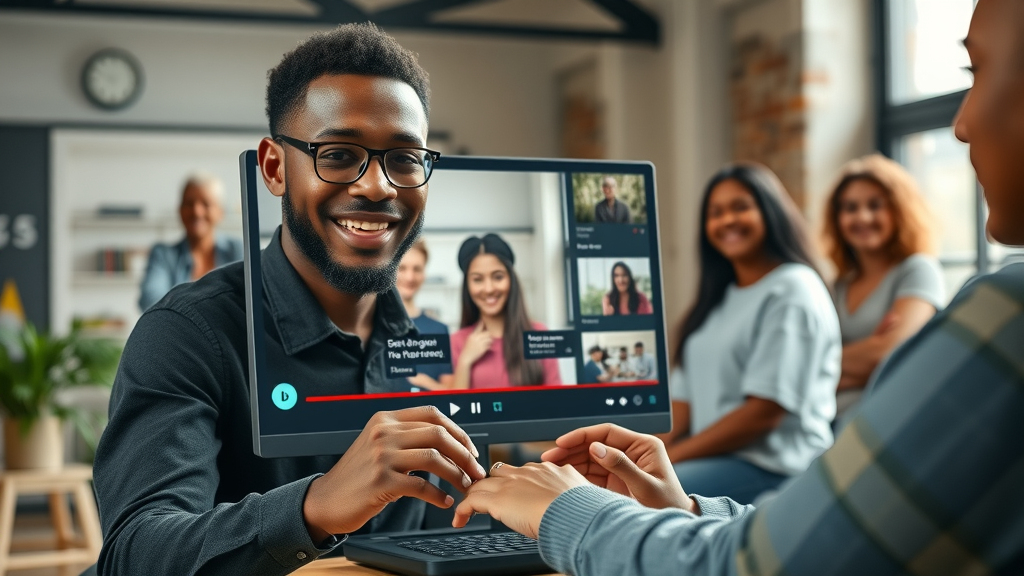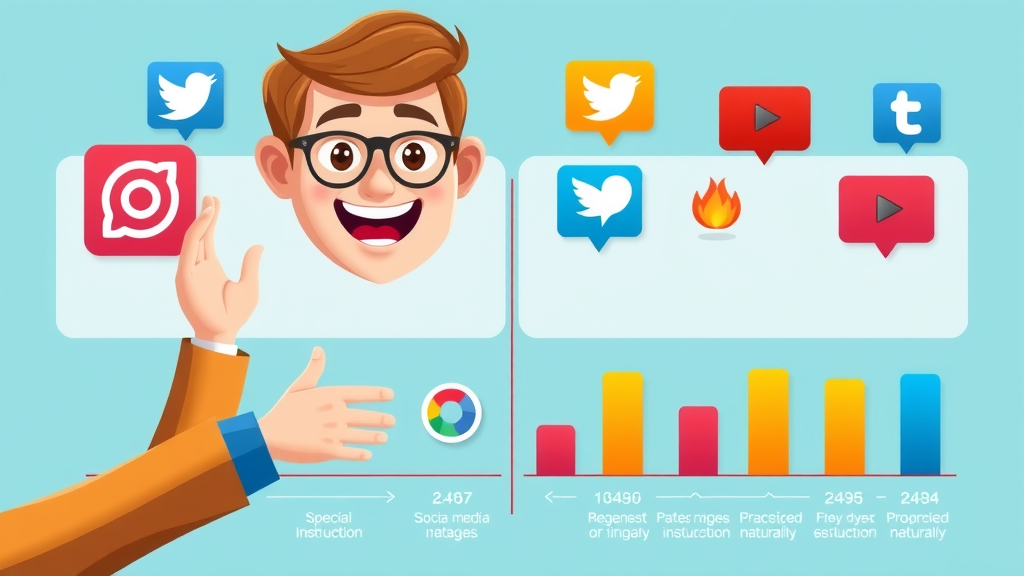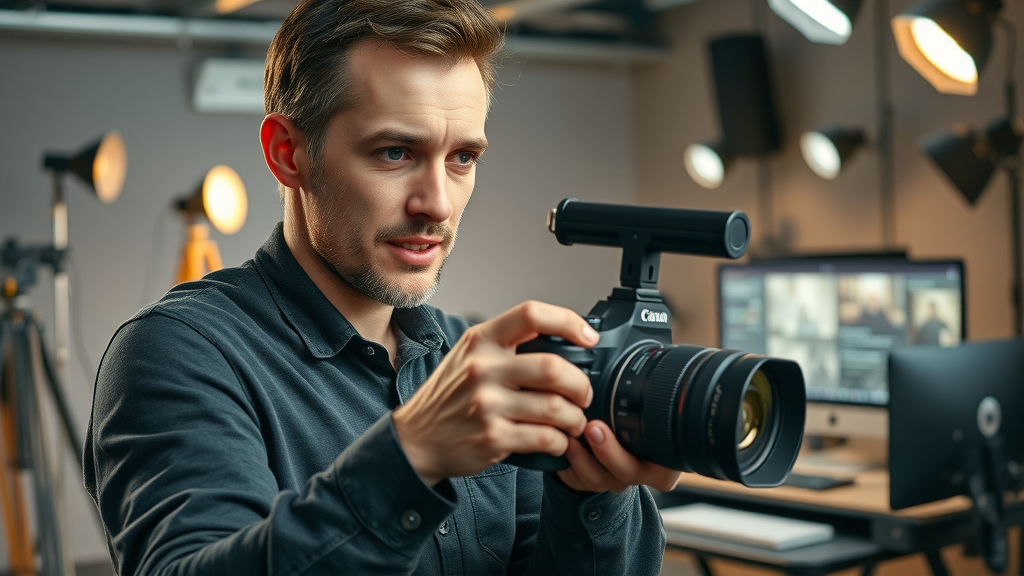Did you know that viewers retain 95% of a message when they watch it in a video compared to just 10% when reading it in text? This means that the brands who embrace effective video marketing strategies are dominating today’s digital marketplace—leaving competitors scrambling to keep up. In this guide, we’ll unleash the secrets to instant impact , helping you captivate your target audience, boost brand awareness, and drive real business growth, no matter your marketing goal.

- Did you know that over 90% of marketers say video marketing strategies deliver a positive ROI? Discover how embracing effective video marketing can skyrocket your brand’s visibility, engagement, and revenue.
- Explore surprising data and high-impact case studies that prove the necessity of an agile video marketing strategy in today’s digital-first marketplace.
Unlocking the Power of Video Marketing Strategies: Why Your Business Needs Them Now
In a world overflowing with information and dwindling attention spans, video marketing has become the heartbeat of online engagement. Modern marketing strategies thrive on visual content—and video, more than any other medium, excels at grabbing attention and inspiring action. Video view rates across platforms like YouTube, Instagram, and TikTok consistently outperform static images and text, making video content indispensable for businesses aiming to sustain a compelling online presence. With over 90% of marketers reporting positive ROI from their video marketing efforts, it's clear that deploying a winning video marketing strategy distinguishes high-growth brands from the rest.
But it's not just about ROI; video marketing strategies create emotional connections, clarify complex messages, and turbo-boost brand awareness more effectively than any other content type. For companies targeting rapid visibility, explainer videos, live streams, and testimonials can turn passive viewers into loyal fans and eager potential customers. In today’s competitive landscape, a powerful video campaign isn’t an optional add-on—it’s a core business driver. The brands thriving right now are those that adapt their marketing strategies to harness the full potential of video.
Achieving Rapid Growth with Effective Video Marketing Strategies
Aligning Video Marketing Strategies with Modern Social Media Trends
To maximize instant impact, savvy brands ensure their video marketing strategies are tightly integrated with current social media trends. That means shaping your video content to seamlessly fit—and stand out—on every social media platform where your potential audience spends time, from Instagram Reels to TikTok challenges and LinkedIn thought leadership bites. Are you leveraging influencers and paid promotions to amplify the reach of your videos? Social media marketing supercharges brand visibility and helps you reach audiences that conventional ads often miss.
Amplifying your reach isn’t just about more posts—it’s about the right posts, in the right place, at the right time. Use platform analytics to discover which formats and lengths work best for your target demographic. Involving influencers can instantly boost trust and engagement, while social sharing and paid sponsoring options increase your campaign’s chance of going viral. Remember: your marketing campaign should seamlessly blend organic and promoted video to fully engage your audience and multiply your video views.

Defining Your Video Marketing Strategy: Setting SMART Goals
Every winning video marketing strategy starts with laser-focused goals aligned to your overall marketing strategy and business objectives. Set SMART goals —that’s Specific, Measurable, Achievable, Relevant, and Time-Bound—for your marketing campaigns. For example, “Increase explainer video views by 30% on social media in three months” or “Drive 20% more sales leads via branded testimonial videos this quarter.”
Just as importantly, determine the right KPIs to track, such as video views, shares, likes, click-through rates, and conversions. These KPIs let you adjust tactics quickly based on what’s driving real results. Remember, a successful marketing effort requires systematic tracking, iteration, and constant improvement—objective data will always outperform guesswork when it comes to scaling success.
Key Components of High-Impact Video Marketing Strategy
Identifying and Understanding Your Target Audience for Video Content
If you want video marketing that delivers, you must know exactly who you’re trying to reach. Start by segmenting your target audience based on their favorite social media platforms—maybe younger audiences favor TikTok, while business professionals spend more time on LinkedIn or YouTube. Dig deep into analytics to reveal their interests, pain points, and the kinds of video content that capture their attention.
Let data guide your marketing campaigns: monitor engagement rates (likes, shares), video view duration, and social interactions to fine-tune both your messaging and delivery formats. The more tailored your content, the more likely your audience will watch to the very end—and take the next step, whether that’s subscribing to your channel, visiting your website, or responding to a call to action for your product or service.
Optimizing Video Production for Brand Awareness and Engagement
Think high-impact video production is out of reach? Even modest budgets can deliver stunning results. Use low-cost tools and apps to streamline filming and editing, or repurpose existing company footage for fresh explainer videos and testimonials. Tips like shooting mobile-first and rapid editing using templates can save time and money, ensuring consistency and quality across your marketing campaign.
Explainer video formats have the power to build credibility, clarify complex topics, and move viewers directly toward conversion. An effective video that clearly communicates your value proposition can rapidly turn new audiences into leads, strengthening brand awareness and trust along the way.

Choosing the Right Types of Video for Each Social Media Platform
Not all types of video thrive equally on every platform. For platforms like YouTube, long-form content such as webinars, tutorials, and vlogs engage audiences seeking depth. For Instagram and Facebook, focus on stories, live sessions, and short branded content. TikTok, with its algorithmic reach, favors viral, bite-sized trends and challenges, while LinkedIn is perfect for concise thought leadership clips and testimonials.
Mix your video content: Branded explainers boost authority, while behind-the-scenes clips humanize your brand. Customer testimonials and product demos showcase real-world value, spurring both trust and conversions. Adapt your production style and length to each platform’s audience and technical requirements for maximum engagement and brand awareness.
Planning a Winning Video Marketing Campaign

Crafting Killer Content Marketing with Video
To dominate in digital marketing, your video content must weave seamlessly into your broader content marketing strategy. Video isn’t a standalone asset: combine it with blogs, emails, and social posts for multichannel impact. Improve SEO by embedding videos on landing pages and using keyword-rich descriptions for search engines. Integrated media marketing strategies (including al media marketing ) maximize visibility and ensure customers encounter your message repeatedly across different touchpoints.
Use a blend of educational, emotional, and entertaining content in your marketing campaign to reach new potential customers and keep your existing audience engaged. Data shows that sites with video are 53 times more likely to rank on the first page of search results, illustrating the immense value of integrated video in content marketing.
Maximizing Video Reach with Social Media Marketing
To expand your marketing reach, cross-promote each video on multiple social media platforms —don’t simply upload once and move on. Use each platform’s trending video formats (like Reels, Shorts, and Stories) to gain algorithmic boosts and organic discovery. Make sure you tailor the aspect ratio, captions, and format for each media platform for optimal results.
Leverage your community by encouraging shares, reactions, and comments, all of which signal to social platforms that your videos are worth promoting. The more your video content is distributed and reshared, the more exponential your growth in brand awareness becomes—making social media marketing an essential piece of your overall video strategy.
Tracking Video Marketing ROI: Analytics and Metrics that Matter
Measuring the ROI of your video marketing strategy is all about tracking the right metrics. Key performance indicators include video views, watch time, shares, click-through rates, and (crucially) conversions such as form fills or sales. These data points tell you what’s working—and where to double down or pivot for your next marketing effort.
Top marketers monitor results in real time, comparing performance across social media platforms and other digital marketing channels. Let this data shape your future campaigns: optimize production times, add or adjust calls to action, or shift your marketing strategy to platforms with better engagement. Continuous learning and data-driven adjustments are what transform routine video content into high-impact, lead-generating marketing powerhouses.
Video Marketing Strategies for Different Business Goals
Building Long-Term Brand Awareness with Effective Video
Great marketing isn’t just about quick wins—it’s about building enduring brand awareness . Video storytelling, emotional hooks, and ongoing series keep audiences coming back for more. Case studies prove that regular, authentic video posts nurture loyalty and brand recall over months or years, often outpacing more expensive traditional media efforts.
For example, brands like Dollar Shave Club grew from startup to household name by consistently using quirky, engaging explainer videos that encouraged shares and conversation. Whether you’re a B2B platform or a consumer brand, investing in reliable video content can deliver lasting brand equity and deep audience connections.
Driving Sales and Lead Generation through Video Marketing Campaigns
Video content fuels direct response marketing. Position your explainer video or demo at the call to action point of your marketing funnel—like near checkout pages or signup forms. This shortens the buyer’s journey and directly boosts conversions. To maximize impact, ensure every video closes with a crystal-clear call to action relevant to the marketing goal: “Subscribe,” “Get Started,” or “Call Now.”
Integrate explainer videos and testimonials throughout your website and email drips to nurture leads and keep your product or service top-of-mind. Statistics show that including a video on a landing page can boost conversion rates by up to 80%, making this an essential best practice for all high-performing digital marketing teams.
Best Practices for Video Production in Modern Marketing Strategy
Ensuring Video Content Quality on Any Budget
High-quality video production isn’t reserved for big brands. Repurpose old footage with creative editing, use your smartphone with a tripod for mobile-first shooting, and tap into rapid-editing software to bring everything together professionally. These video production hacks keep your content pipeline flowing—without blowing your marketing budget.
Above all, guard your message clarity and brand consistency. Make sure every video, regardless of length or channel, reflects your brand voice and supports your wider marketing strategy . Cohesive messaging is what turns casual viewers into engaged, loyal fans.

Accessibility and Inclusivity in Video Marketing Strategies
With millions of people relying on captions, alternative text, and audio descriptions, accessible video is a necessity—not just a bonus. Add subtitles, descriptive titles, alternative text, and make your video player compatible with assistive technologies. This ensures you reach the broadest-possible audience, including those with hearing, visual, or cognitive differences, expanding your marketing reach and legal compliance.
Stay up to date with current digital accessibility standards for your target markets. Large platforms like YouTube and Facebook now reward accessible content with better placement, further extending your video marketing impact.

People Also Ask: What is a video marketing strategy?
What is a video marketing strategy?
- A video marketing strategy is a comprehensive plan to leverage video content in promoting products, services, or a brand across digital channels to achieve business objectives, from brand awareness to lead generation.
What are the 4 marketing strategies?
- The four marketing strategies traditionally include product, price, place, and promotion; video marketing strategies enhance the promotion aspect by adding dynamic storytelling and audience engagement.
What are the top 7 types of digital marketing strategies?
- These include content marketing, social media marketing, search engine optimization (SEO), email marketing, pay-per-click (PPC), affiliate marketing, and video marketing – with video strategies increasingly central.
What are the 7 C's of digital marketing?
- Content, Context, Community, Convenience, Cohesion, Conversion, and Communication – all of which are critical touchpoints in a successful video marketing strategy .
What Can You Expect from Adopting Winning Video Marketing Strategies?
- Quick impact on engagement, exponential growth in brand awareness , and measurable lift in leads and conversions.
Side-by-Side Comparison Table: Video Marketing Platforms and Approaches
| Platform | Audience Demographic | Best Video Types | Unique Features |
|---|---|---|---|
| YouTube | Broad, all ages | Tutorials, Vlogs, Explainers | Long-form discovery |
| Facebook/Instagram | 25-44, urban | Stories, Live, Short ads | Social integration |
| TikTok | 16-35, mobile-first | Short-form, Viral trends | Algorithmic reach |
| 25-54, B2B | Thought leadership, Testimonial | Professional context |

Expert Insights: Quotes on Driving Results with Video Marketing Strategies
“Video is no longer optional for brands wanting to win online— it’s the most powerful way to tell your story and convert.” — Digital Marketing Expert
“Effective video marketing strategies are about connecting emotionally, not just selling a product.” — Social Media Consultant
Essential Guide: Types of Videos Every Marketing Strategy Needs
- Explainer videos
- Product demos
- Testimonials
- Live streams
- Webinars
- How-to videos
- Brand story content
- When to use each? Use explainer videos to introduce products, demos for late-stage leads, testimonials for building trust, and live/webinar formats for direct engagement and Q&A. Diversifying the types of videos in your marketing campaign ensures you address multiple marketing goals and different stages of the customer journey.

Quick-Start Checklist: Launching a Video Marketing Campaign
- Define campaign goals and KPIs
- Select platforms and video production tools
- Script, film, and edit video content
- Schedule distribution across social media platforms
- Analyze performance and iterate

FAQs on Video Marketing Strategies
-
What’s the ideal length for video content on social media?
Most platforms favor short-form videos: 15–60 seconds for TikTok and Instagram Reels, 2–5 minutes for YouTube, and under 30 seconds for in-feed Facebook or LinkedIn ads. Short, concise content typically yields higher engagement and completion rates. -
How do you measure the ROI of a video marketing campaign?
Measure ROI by tracking growth in core KPIs: video views, watch time, click-through rates, conversion rates, and direct sales or leads attributed to each video. Use analytics dashboards native to each social media platform as well as tools like Google Analytics for complete reporting. -
What are the current trends in video marketing strategy?
Leading trends include vertical video for mobile audiences, live streaming, user-generated video content, shoppable videos, and interactive features like polls or embedded sign-ups. Emphasis on authenticity and accessibility is also growing rapidly across all platforms.
- Watch how brands transformed their social media presence using innovative video content and targeted campaigns.
- Industry leaders discuss budget constraints, creative processes, and results.
- Step-by-step strategy for building and executing on all major media platforms.
Final Thoughts: Move Beyond Guesswork with Proven Video Marketing Strategies
- Stop guessing. Start growing. Call now for real marketing strategies that get results. 772-349-1529
 Add Row
Add Row  Add
Add 




Write A Comment